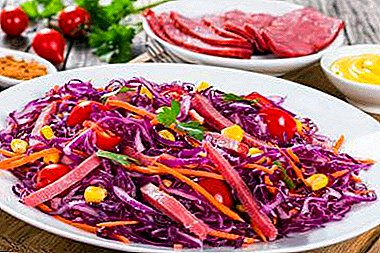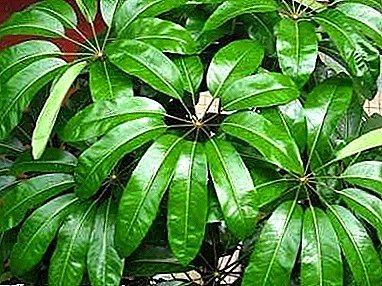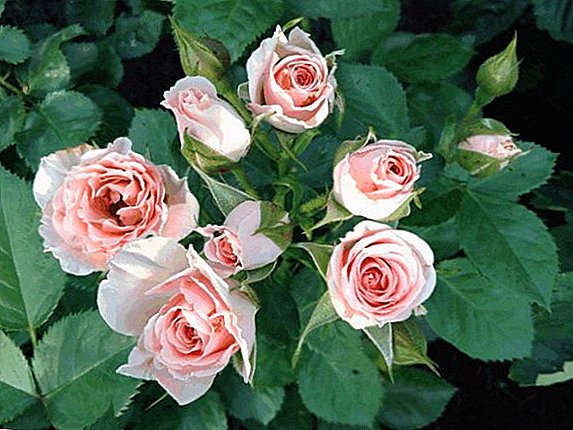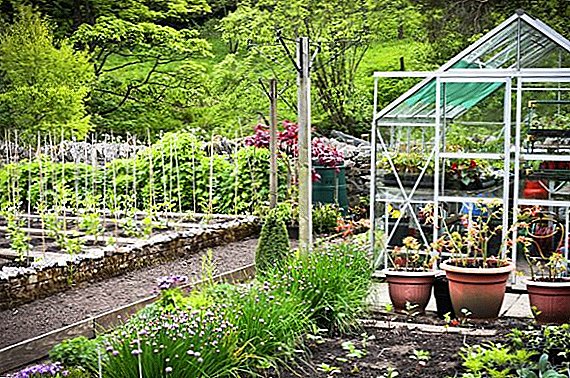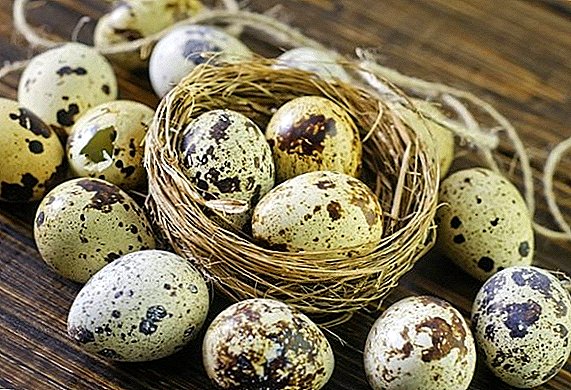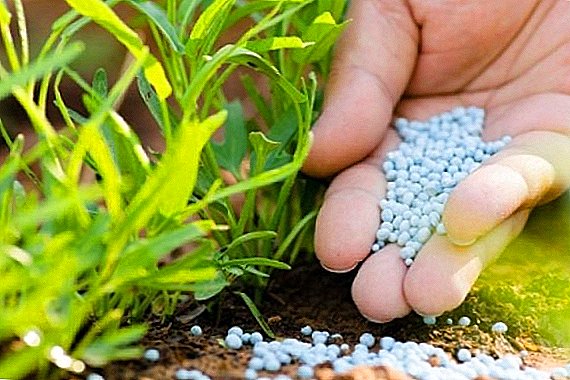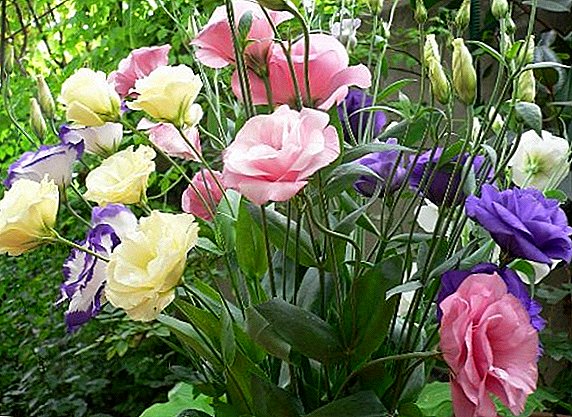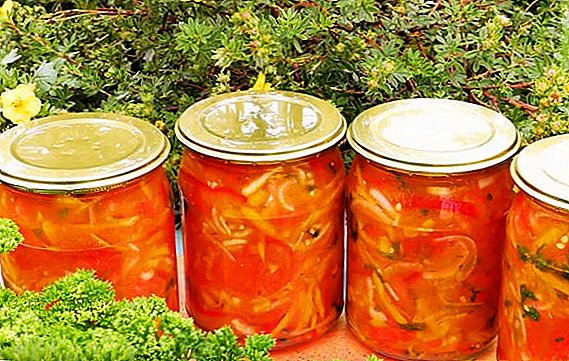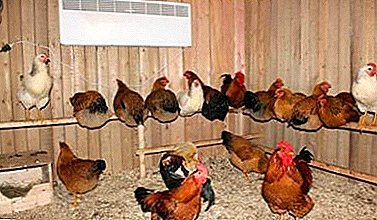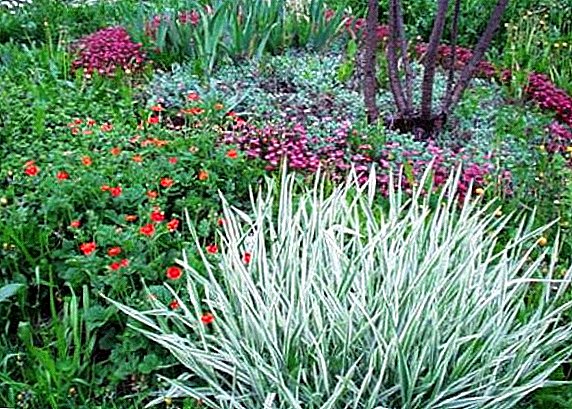 The original perennial of the family of cereals - cane reed is often found in urban parks. The plant looks good in flowerbeds and when decorating artificial ponds, unpretentious in the care and undemanding to the soil. Flower growers valued for long green leaves with decorative white or yellow stripes. Another name for the plant is flyaris or dvukistochnik. Flowers of Pharis do not represent decorative interest, therefore the plant is used in landscape gardening design due to its original leaves.
The original perennial of the family of cereals - cane reed is often found in urban parks. The plant looks good in flowerbeds and when decorating artificial ponds, unpretentious in the care and undemanding to the soil. Flower growers valued for long green leaves with decorative white or yellow stripes. Another name for the plant is flyaris or dvukistochnik. Flowers of Pharis do not represent decorative interest, therefore the plant is used in landscape gardening design due to its original leaves.
Botanical description
Canary grass belongs to the family of cereals. The name of the plant comes from the name of the canary. Its seeds in the past were often used to feed poultry, including canaries.
The family traditionally includes: rye, sorghum, maned barley, millet, triticale, wheat, and timothy grass, grass grass, ground reed grass, couch grass, bezosti bonfire, fescue, chumizu and many other plants.
Perennial grows up to 2 m, has a creeping rhizome, pointed long leaves and buds-inflorescences. The color of the leaves is bright green with oblong white or yellow stripes. Propagated by rhizomes.  Grown with decorative and fodder purpose. In gardening variegated perennial forms are cultivated. It blooms from mid-summer to early autumn. More than 25 species of canary selected the territory from the steppe zone to the highlands. Wild species are found on the banks of reservoirs. It grows on any soil in Europe, Asia, America.
Grown with decorative and fodder purpose. In gardening variegated perennial forms are cultivated. It blooms from mid-summer to early autumn. More than 25 species of canary selected the territory from the steppe zone to the highlands. Wild species are found on the banks of reservoirs. It grows on any soil in Europe, Asia, America.
Kinds
In the wild form, there are 16 species of canary: phalaris amethystine, phalaris angusta, phalaris aquatic, phalaris arundinacea, phalaris brachystachys, phalaris californica and others.
The most widespread in the plant received canarian and reed canary.  Canary Canary Varieties of canary, cultivated in ornamental gardening:
Canary Canary Varieties of canary, cultivated in ornamental gardening:
- "Feesey". A characteristic sign of the variety is green leaves with long, longitudinal white stripes. Widely used in landscape design. Poor heat and grows well in spring and autumn;

- "Luteopicta". Owner of unique yellow stripes. In the heat, the stripes turn green and the color of the leaves fades;

- "Picta " - one of the oldest decorative cereals. The leaves are green with longitudinal cream stripes;
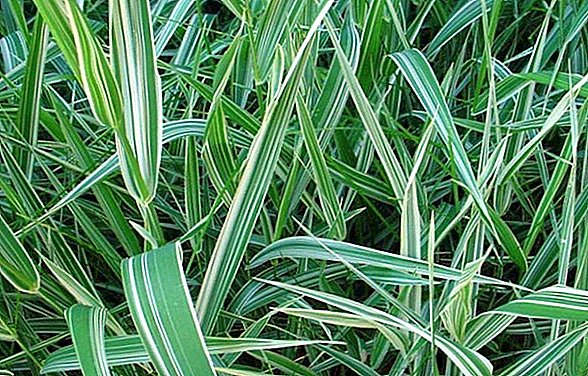
- "Tricolor" got its name from the fact that during cold periods its green leaves become pinkish.

Breeding
Two main types of breeding are popular: vegetative and seed.
Even if you are not going to propagate perennials, then it should be borne in mind that after 3-5 years of growth in one place, the canary will grow, and the bush will not keep its shape well. In this case, it will have to seat.
Dividing bush equal parts and transplantation is carried out in early autumn, so that the plant has time to acclimatize for the winter. Before the change in the soil make a nutrient mixture. Planting is carried out at a depth of 10-15 cm, so that the root system can actively develop.
Did you know? In traditional medicine, the canary was used as a general tonic. They ground flour from its seeds and baked healthy bread. The seed harvest is well collected from a 3-4 year old plant.
Cuttings - This is the least popular method of reproduction, because it requires planting part of the plant in a nutrient soil with good drainage. In this way, the flylaris can be propagated from May to July.
In addition to dividing the bush and cutting, perennial can be propagated by rhizome and seeds.
Seeds
In the spring, in April - May, when the soil warms up well, sow the seeds.  Seeds of canary The preparation of soil for planting consists of loosening and creating holes.
Seeds of canary The preparation of soil for planting consists of loosening and creating holes.
If the area is rocky or clayey, nutrient soil is added before planting in the wells. Seeds before planting can be germinated before the tip of the seed of the seed.
For germination, seeds are placed under a damp cloth. The soil for planting seeds should be wet. Landing form - breeding.
The distance between the holes of 20-25 cm creates the necessary space for each plant. Shoots appear on the 10-15th day. When the soil dries, they carry out additional watering. A growing plant does not require special care.
Did you know? Canary seed belongs to the best types of bird food. In the wild, grassy canary grows in the Canary Islands. His path to Europe ran along with the canaries. Perennial seeds will be a complete feed for pet parrots. For large macaw and cockatoo parrots, it is not recommended to include canary seeds in the diet.
Dividing bush
Soil preparation includes loosening and installation of restraints for root growth. Canary grass refers to the aggressive forms of vegetation.
Its creeping rhizome very quickly captures new territories. To avoid this, the plant can be planted in an old bucket or in a metal circle, recessed into the soil by 20-30 cm. Planting depth should not exceed 15 cm.
Rhizome very well grow in any soil. For reproduction by rhizomes, a bush is dug together with the roots and divided into several parts. Each part of the bush is seated in a separate pre-watered hole. This way you can seat the flyaris in spring or autumn. 
Plant Care
With proper care, cereal perennials will long delight with perfect forms and variegated leaf color. In the first year of life, the plant does not need feeding. During this period, the main effort is applied by the canary to the development of the root system.
Learn about ornamental cereal plants for your garden.
Therefore, the height of the bush does not reach the maximum size. To increase the density of the bush it is advisable to trim the leaves. At the end of winter the leaves are pruned. The plant does not need special conditions for wintering.
Watering
Despite drought tolerance, canary needs watering. With a lack of moisture leaves become faded. Therefore, the irrigation mode under normal conditions - 1 time in 5 days abundantly. During the summer heat - 1 time in 2-3 days as the soil dries. It should be remembered that only adult plants tolerate drought well.
Humidity
The plant can grow in moist soil on the banks of reservoirs. But the stagnation of water has a negative effect on its development: the growth of the root system slows down, root decay may begin.
To prevent this, we need good soil drainage. Also, the plant can be planted on a plot with a slope. The slope helps to drain water from the root system. 
Top dressing
Plants that can grow in conditions of depleted soil substances do not need additional feeding. Including canary, some species of which grow in the highlands. For these herbs, our soil is quite nutritious.
If the area under the plant is clay or stony, during planting you can make compost at the rate of 50-80 g / sq. m. No need to increase the rate of fertilizer, because overdose will lead to intensive growth of the roots and reduce the stability of the stems.
Important! To increase the yield of the canary, a starting dose of mineral fertilizers is introduced under the plant. When sowing - application of phosphate fertilizers at the rate of 20 kg / ha. Nitrogen fertilizers are applied annually at a dose of 30 kg / ha. Also in the fall, when digging up the soil, potassium is applied at the rate of 30 kg / ha.
If the canary is grown for seed to birds, then fertilizing with mineral fertilizers is required. Gardeners also feed fertilizers in early autumn, after the end of the active vegetative period and seed ripening.
Pruning
Perennial is grown due to the presence of green leaves in the cold season.
Therefore, the annual pruning of plants can be carried out in the spring, in March, before the start of the vegetative period. Pruning a one-year bush practice to increase its thickness. 
Restriction of growth of rhizome
Since the roots are spreading very quickly, capturing other territories, it is desirable to limit the bush when planting.
For example, placing an old bucket around the perimeter of the seat to a depth of 20-30 cm. A fence made of garden tape or slate will also work.
Use in landscape design
The plant grows well to bushy forms, so it can be used to create plant borders.
The ability to grow in very wet soils makes canary convenient for the design of artificial ponds.
Perennial can land both in the soil and grow in separate containers. Containers can decorate arbors, walking alleys.
On the flowerbed, the canary will be appropriate in the form of accent points, for example, in the center of the composition. The composition may consist of several species of plants. Note that the height of the inflorescence reaches 2 m.  Therefore, it is better to place the plant in the center of the composition or on the sides of the flower bed. Perfect fit when placed in an alpine slide.
Therefore, it is better to place the plant in the center of the composition or on the sides of the flower bed. Perfect fit when placed in an alpine slide.
Read also what flowers are suitable for growing on alpine slides.
Difficulty growing
Canary grass, like other perennial grasses, is subject to decay in the winter-spring period. This contributes to the thaw. The thawed snow freezes overnight and forms an ice crust.
Under the crust rises temperature and humidity. The plant begins to breathe intensively.
There is a consumption of nutrients, canary weakens and is affected by fungi. In the spring, the development of the disease is noticeable due to the lethargy of the leaves and the gray bloom on them.  Prevention is proper drainage in the root zone. Do not create water stagnation in the soil, as this contributes to the development of mold and other diseases. If the infection has already occurred, the liming of the soil will prevent the development of the disease.
Prevention is proper drainage in the root zone. Do not create water stagnation in the soil, as this contributes to the development of mold and other diseases. If the infection has already occurred, the liming of the soil will prevent the development of the disease.
Diseases and pests
Despite resistance to diseases and pests, for 3-4 years of growth in one place, plants can undergo ordinary cereal diseases and be affected by wireworms, meadow moths and other seed-bearing insects.
Important! Diseases can be fought with agrotechnical measures. - crop rotation To do this, the predecessors of Canary should be steam or tilled crops.
Diseases of cereal perennials:
- various types of mold;
- rot;
- spotting;
- gelmintosporiozy;
- ergot;
- rust;
- powdery mildew;
- leaf and stem smut;
- sclerotinia;
- dusty smut;
- solid smut;
- mosaics.
All types of diseases are easily recognized by the color and intensity of plaque on the leaves or the visual presence of rot.
When powdery mildew appears, the plant is sprayed with raster sulfur. The rust and gelmintosporioz of cereals are stopped by the preparations "Vectra". Rates of working solutions are calculated based on the treated area.  Since the units indicated on the package are kg / ha, it is necessary to find out the area in meters and determine the right amount of grams for the preparation of the solution.
Since the units indicated on the package are kg / ha, it is necessary to find out the area in meters and determine the right amount of grams for the preparation of the solution.
The main pests of grass are: weevils, moths, thrips, aphids, bedbugs, fleas, seedlings, weevils, mosquitoes, wireworms and other insects. Pest control is carried out with insecticides, depending on the type of insect that hit the plant. The method of applying drugs - spraying.
Read more about how to deal with powdery mildew and such pests as wireworms, weevils and thrips.
Growing faryaris is not difficult, even for a novice gardener. The plant tolerates flooding, drought, heat and frost, as well as other weather disasters. If you want to enjoy the magnificent decoration of your flower bed, gazebos for rest or an artificial reservoir without large labor costs and wasted time, choose this plant. Falyaris can be used in the design, either alone or in combination with other perennials.






